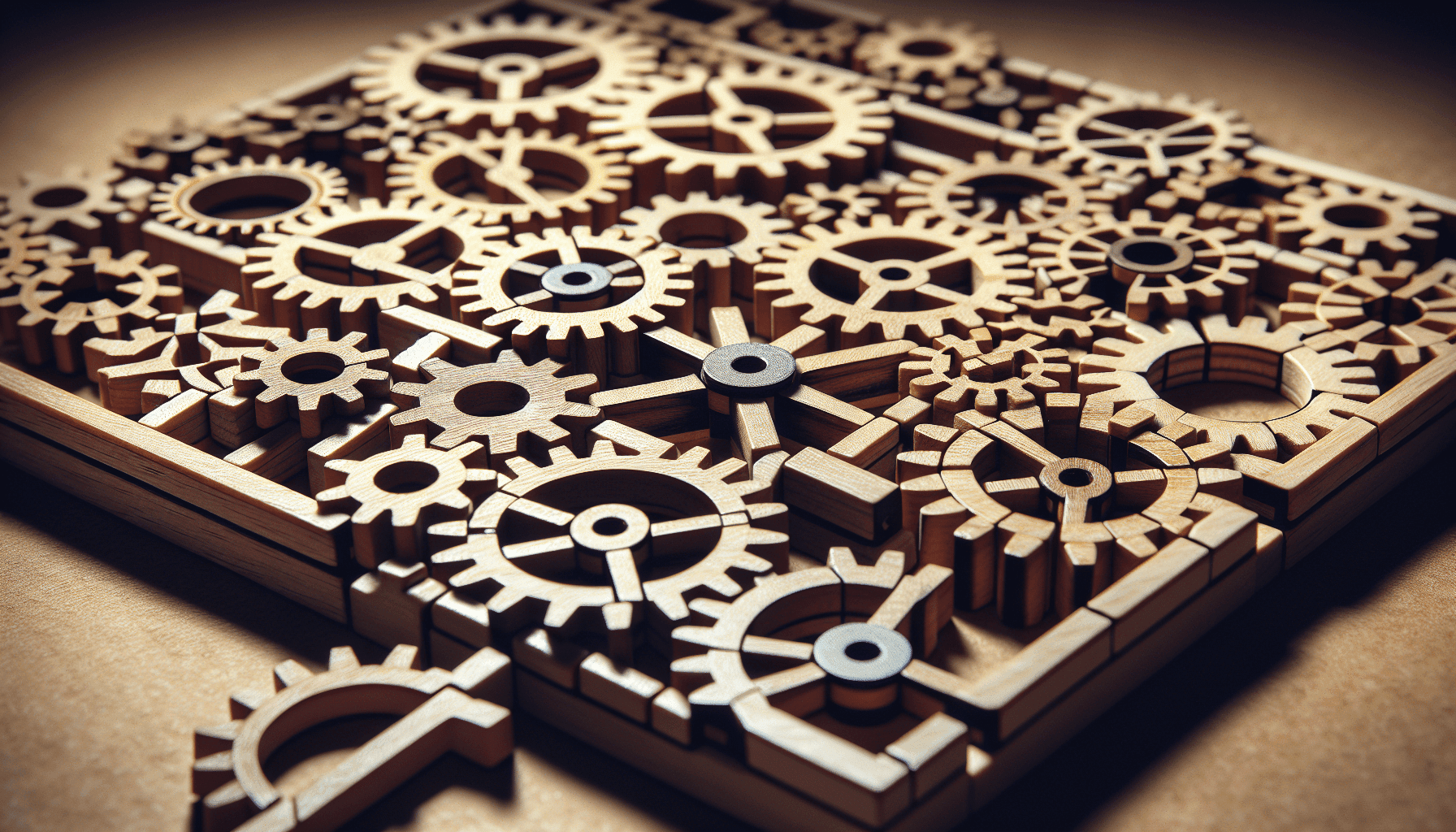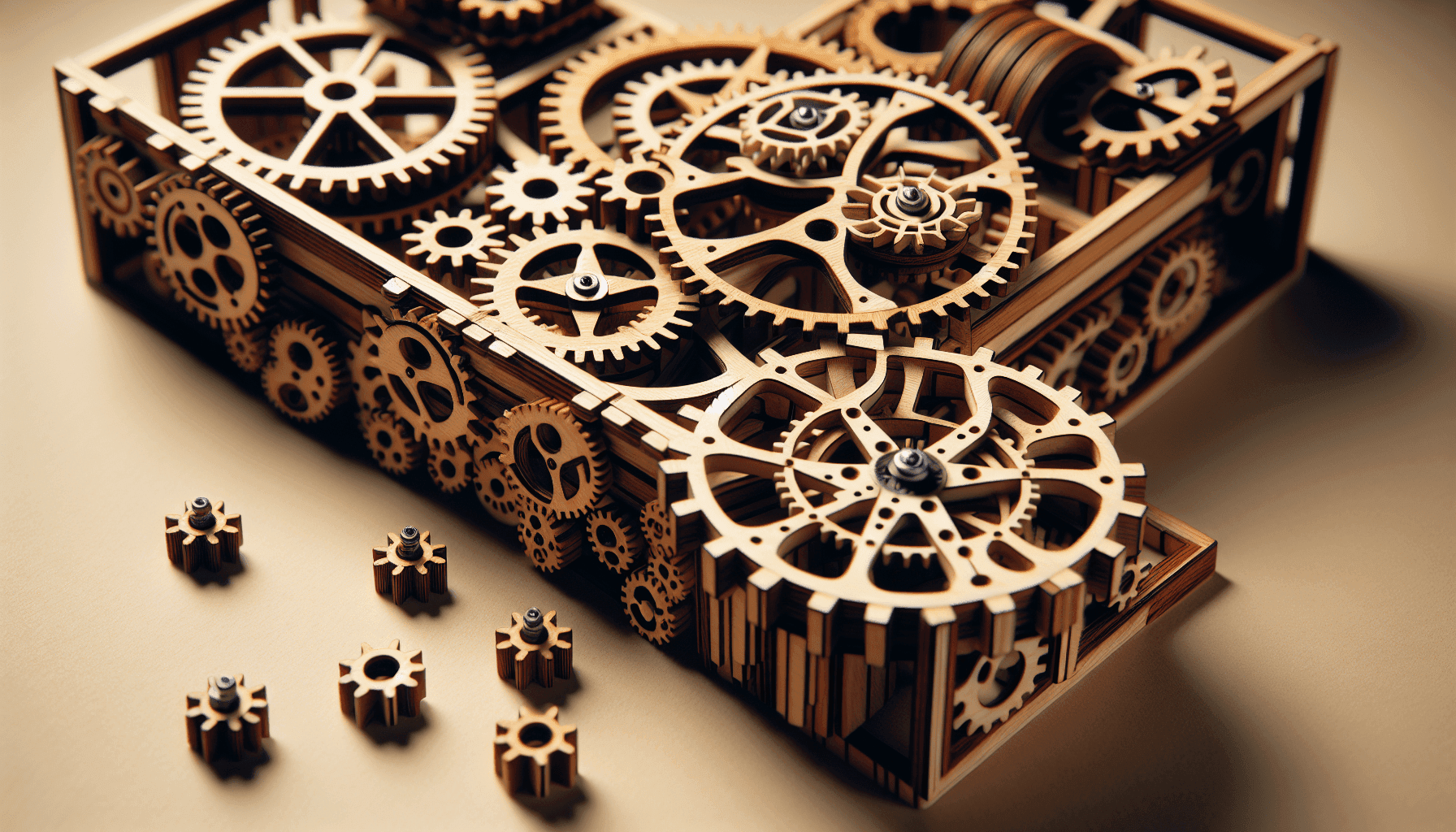Have you ever marveled at the intricate designs of wooden puzzles and wondered how they function? Mechanical wooden puzzles are fascinating creations that combine the art of woodworking with the cleverness of engineering. These puzzles are more than just static pieces; they come alive with numerous moving parts, creating a dynamic experience for the puzzler. So, what exactly makes these puzzles tick, and do they really have moving parts?
Understanding Mechanical Wooden Puzzles
Mechanical wooden puzzles are not just your average jigsaw puzzle. They are sophisticated constructions that simulate movement through various interlocking parts. These puzzles are designed to move, shift, and even transform, often resembling miniature machines or structures. Brands such as Robotime, Rokr, Ugears, Wood Trick, EWA, Vitascope, Wooden City, and Handmadecity offer a range of these intriguing puzzles, each with its own unique theme and level of complexity.
The Magic Behind the Movement
At the heart of every mechanical wooden puzzle lies a clever system of gears, levers, and shafts. These mechanical components are meticulously designed to fit together perfectly, allowing for smooth movement. When assembled correctly, these parts allow the puzzle to perform functions such as spinning, walking, or even playing music. The movement is powered by various mechanisms, which could be rubber bands, winding keys, or gravity itself.
How Do Moving Parts Work?
The moving parts in mechanical wooden puzzles are engineered to perform specific functions. Here’s a closer look at some of the components that make these puzzles come alive:
- Gears: These toothed wheels work together to transmit motion and change speed or direction within the puzzle. The interaction between gears can create complex movements and sequences.
- Levers: Acting as arms within the puzzle, levers are used to transfer force and movement from one part of the puzzle to another. They can be simple in design or involve multiple pivot points for added complexity.
- Shafts: These are the axes around which gears and levers rotate. Shafts play a crucial role in stabilizing movements and maintaining precision.
- Rubber Bands: Often used as a source of tension, rubber bands can store and release energy, causing parts of the puzzle to move or spin.
- Cams: These rotating or sliding pieces are integral in transforming rotational motion into linear motion. They add another layer of movement complexity to the puzzle.
Examples of Moving Parts
The following table provides examples of specific moving parts typically found in popular mechanical wooden puzzles:
| Brand | Puzzle Example | Moving Parts |
|---|---|---|
| Ugears | Mechanical Flower | Petals that open and close manually |
| Robotime | Vitascope | A miniature movie projector with rotating film reel |
| Rokr | Luminous Globe | Spinning globe with internal LED mechanisms |
| Wood Trick | Mechanical Clock | Moving clock hands powered by rubber bands |
| Wooden City | Ferris Wheel | Rotating wheel driven by gears and levers |
Assembling the Puzzle
Building a mechanical wooden puzzle is an adventure in itself. The process requires patience, a touch of creativity, and a keen eye for detail.
Step-by-Step Assembly
- Organizing Pieces: Begin by laying out all the puzzle pieces and sorting them by type and size. This increases efficiency and reduces the likelihood of losing small components.
- Following Instructions: Pay careful attention to the detailed step-by-step instructions provided with the puzzle. These guides are crucial in ensuring that each piece is placed correctly.
- Interlocking Parts: Many pieces are designed to interlock seamlessly. Take your time to understand how each part connects, ensuring a snug and secure fit.
- Testing Mechanisms: As you assemble, periodically test the movements of gears and levers. This ensures everything is aligned correctly and allows you to troubleshoot any misalignments early.
- Final Adjustments: Once the puzzle is fully assembled, make any necessary adjustments to optimize the movement. Ensure all parts move smoothly and freely without any obstruction.

The Joy of Solving and Creating
Solving a mechanical wooden puzzle is as rewarding as creating one. Every successful twist, turn, or movement is a testament to the builder’s effort and attention to detail. These puzzles not only provide entertainment but also serve as decorative pieces that showcase craftsmanship and elegance.
Mental and Emotional Benefits
Engaging with mechanical puzzles offers several benefits:
- Improved Cognitive Skills: The process enhances problem-solving abilities and spatial awareness.
- Stress Relief: The focus required during building can be meditative, providing relief from stress and anxiety.
- Sense of Accomplishment: Completing a complex puzzle brings a profound sense of achievement and satisfaction.
Displaying Your Masterpiece
Once completed, a mechanical wooden puzzle can be displayed as a timeless piece of art. They add character and intrigue to any space, prompting curiosity and conversation among guests.
Creating Unique Experiences
Each puzzle builds its own narrative, transforming an ordinary item into a source of wonder. From model vehicles that move like their real-life counterparts to intricate musical instruments that produce sound, mechanical puzzles offer unique, meaningful experiences.
The Appeal of Mechanical Wooden Puzzles
Mechanical wooden puzzles have captured the hearts of enthusiasts around the world for various reasons.
Eco-Friendly Creativity
Wooden puzzles are crafted from sustainable materials, making them an eco-friendly choice compared to plastic alternatives. The natural texture and aesthetic appeal of wood also add a tactile and visual dimension to the experience that synthetic materials can’t replicate.
Designed for All Ages
While many associate puzzles with children, mechanical wooden puzzles cater to all age groups. They offer a range of complexity levels, making them suitable for beginners and seasoned builders alike.
Education Meets Entertainment
These puzzles are not just entertaining but educational. They serve as excellent educational tools for teaching STEM (Science, Technology, Engineering, Mathematics) principles. Through hands-on assembly, individuals gain insights into mechanical concepts and design thinking.

Final Thoughts
In the world of mechanical wooden puzzles, movement and form come together in exquisite harmony. These puzzles invite you to become both engineer and artist, engaging your mind in a creative, dynamic process. Whether you’re looking for a stimulating hobby, a decorative piece, or an interactive learning tool, mechanical wooden puzzles offer endless possibilities for discovery. Are there moving parts in these captivating creations? Absolutely. Let the fascinating world of mechanical puzzles move you in ways you never expected.
Ready to start your 3D wooden puzzle journey? Click on any of the following links for our reviews:
All Categories | Boats | Clocks | Marble Runs | Musical Boxes | Musical Instruments | Puzzle Boxes | Trains | Trams | Trucks